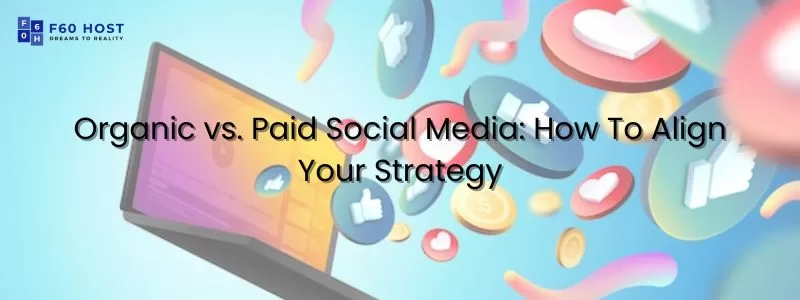Organic vs. Paid Social Media: How To Align Your Strategy

Social media has developed into a vital instrument in the always-changing field of digital marketing, helping companies engage with their target market. Platforms such as Facebook, Instagram, Twitter, LinkedIn, and many more have billions of users globally, providing businesses with many potential customers. But two main approaches come up when it comes to using social media effectively: paid and organic social media. A good social media marketing strategy must strike the correct balance between each of its unique strengths and shortcomings.
What is Organic Social Media?
The term “organic social media” describes the genuine, unpaid material you post on your social media accounts. Through likes, shares, comments, and direct interactions, this content is designed to interact with your current followers and attract new ones. Among organic social media are:
Regular Posts: You share daily updates, pictures, and videos with your followers. They provide a consistent flow of material to keep viewers interested.
User-Generated Content (UGC): You can publish content your fans or consumers make about your brand naturally. This increases confidence and demonstrates how much your clients appreciate your good or service.
Engagement and Interaction: One of the most important aspects of organic social media is replying to messages and comments and interacting meaningfully and personally with your audience.
What is Paid Social Media?
Paid social media refers to promoting your content to a wider and frequently more specific audience by utilising the advertising options offered by social media networks. Among the paid social media are:
Sponsored Posts: By paying to advertise your regular postings to a larger audience, you can increase their reach. By doing this, you may connect with users who might not be following your page.
Paid Advertisements: These unique advertisements were made with particular marketing objectives in mind, such as increasing website traffic, lead generation, or brand awareness. These ads can be tailored to target specific interest groups, locations, or demographics.
Influencer Marketing: Collaborating with influencers that have a large fan base can also be seen as paid social media since you are paying them to promote your goods or services.
The Organic vs. Paid Dilemma
In a complete marketing strategy, both sponsored and organic social media techniques have their own advantages. Here’s how to successfully align them:
- Define Your Goals
Organic: Use natural content to interact with your current audience, create a community, and define your brand.
Paid: Use sponsored advertising to accomplish particular company goals, such as raising sales, generating leads, or improving website traffic.
- Target Audience
Organic: Focus on building your audience naturally by fostering your present following and producing interesting content.
Paid: To increase conversions, use paid advertisements to reach a larger, possibly more specialised audience.
- Content Quality
Organic: Produce useful, interesting, and high-quality material that captures the core values of your brand.
Paid: Make sure the targeted content you purchase draws in viewers and contributes to the campaign’s objectives.
- Budget Allocation
Organic: Creating an effective organic presence is a long-term endeavour that doesn’t call for a large budget, but it does take time.
Paid: Allocate a budget for sponsored advertising to meet immediate goals and expand your audience.
- Monitor and Analyze
Careful observation and analysis are necessary for both paid and organic tactics. Utilise social media analytics tools to gauge how well your campaigns and content are performing.
- Adapt and Optimize
Make the required changes in light of your performance data. Increase your investment in what is effective and keep improving your strategy.
- Test and Experiment
In both organic and paid campaigns, don’t be afraid to try out various content formats, ad types, and targeting options. Opportunities can arise as a result of innovation.
- Integration
Paid and organic strategies shouldn’t be used separately. They need to enhance one another. To increase the visibility of your top-performing organic content, run paid advertisements.
Conclusion
The debate between organic and paid techniques in the context of social platform marketing shouldn’t be binary. Successful businesses manage to achieve a balance, utilising each tactic when it makes the most sense. While a paid social platform allows you to reach a larger, more focused audience and achieve particular commercial goals, an organic social platform helps you develop a devoted following and fortify your brand identity. You can attain your business objectives and optimise the results of your social media marketing campaigns by skillfully coordinating these techniques.
